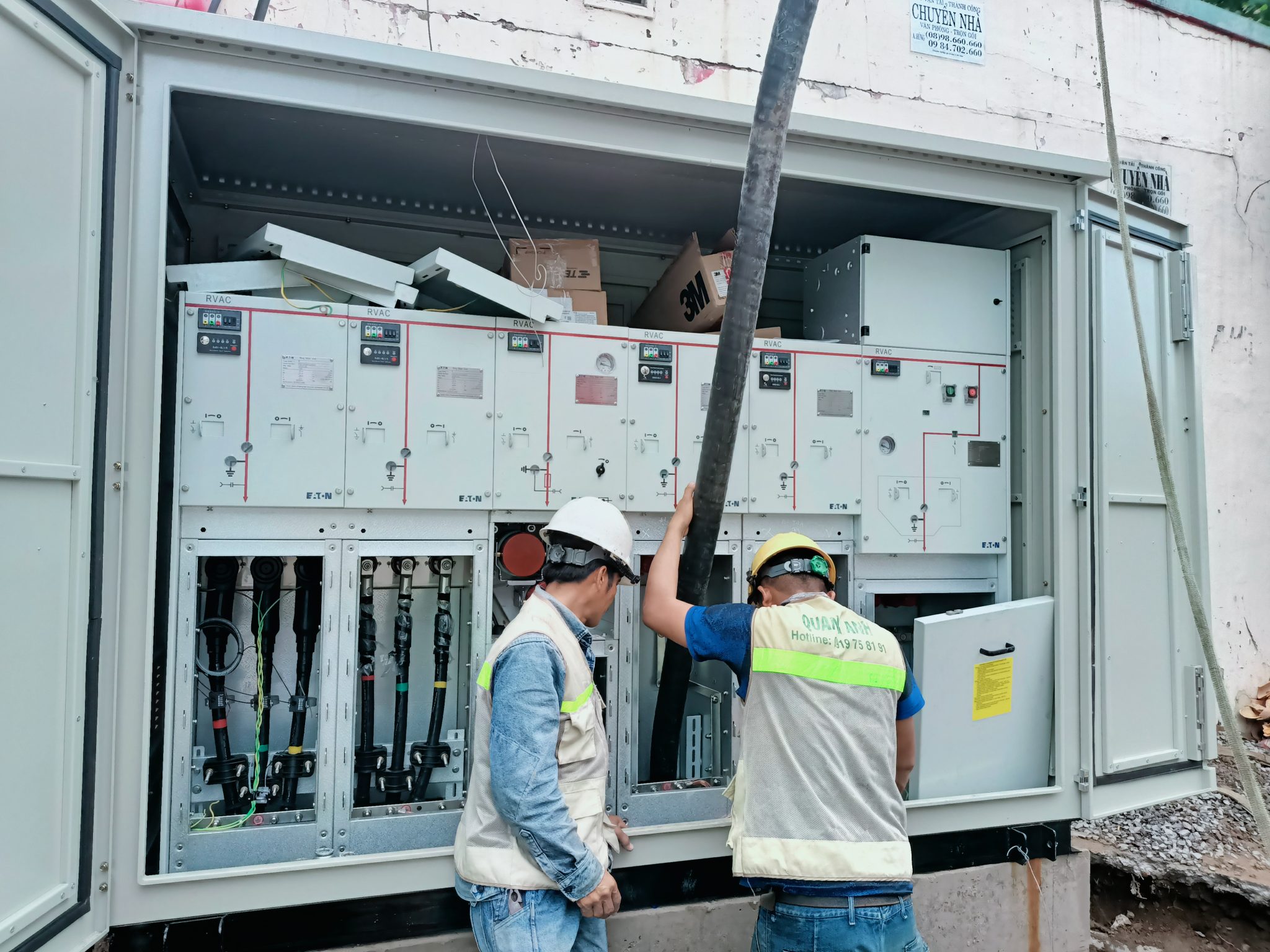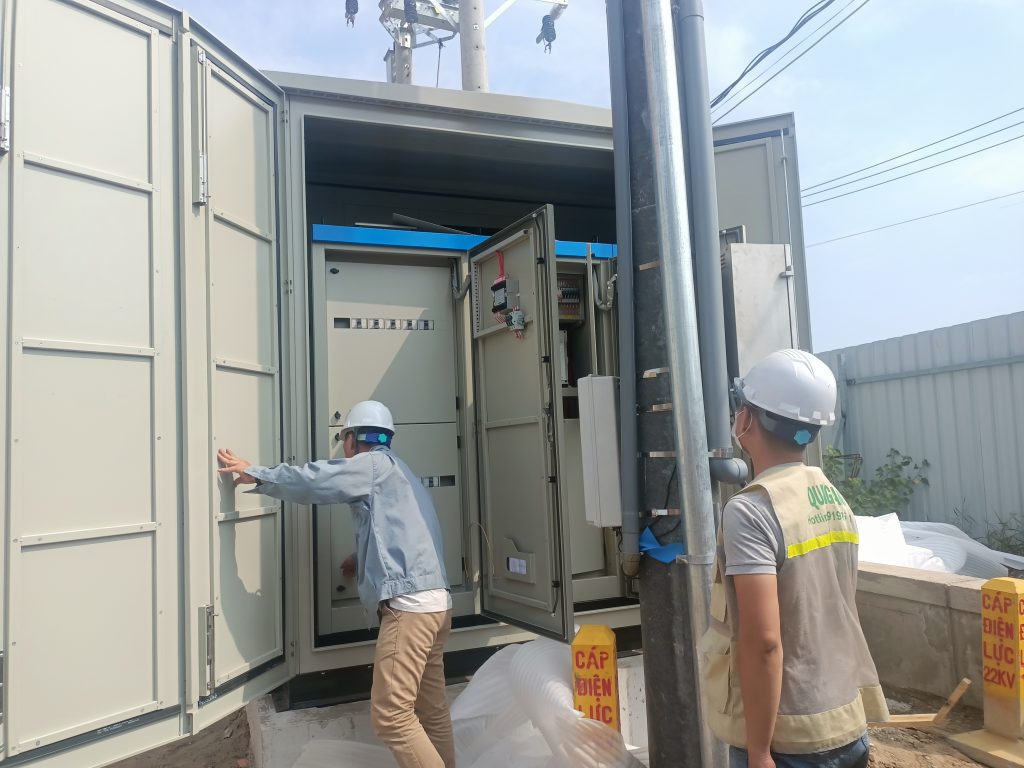News
Understanding HVAC Systems for Manufacturing Plants
The HVAC system plays a critical role in maintaining air quality and controlling the environment, especially in high-demand manufacturing plants like pharmaceuticals and food.
Structure and Function of HVAC Systems
The HVAC system for manufacturing plants includes key components such as air handling units (AHU) for heat exchange and clean air supply, condensers using compressors to condition air, duct systems with insulated airways, and HEPA filters to ensure dust and particle filtration. All components work together to optimally control air quality for the working environment.
Structure of HVAC Systems
The HVAC (Heating, Ventilation, and Air Conditioning) system is a complex engineering assembly consisting of three main parts ensuring temperature, humidity, and air quality adjustment in living and working environments.
- Heating System: Includes devices like boilers, heat pumps, using various fuels like coal, oil, gas, electricity. Heat is distributed through convection, conduction, and radiation to warm the air.
- Ventilation System: Supplies and circulates fresh air, removes polluted indoor air. This can be mechanical or natural, depending on architectural design.
- Air Conditioning: Consists of cooling devices, heat exchangers, and cooling systems to reduce air temperature, adjust humidity, provide filtered air.
Main Equipment Components
The equipment components of the HVAC system include:
- Air Handling Unit (Air Handling Unit – AHU): Conditions the air within the building by mixing fresh and indoor air, adjusting humidity, temperature, and filtering air.
- Fan: Helps circulate air throughout the entire system to required spaces.
- Air Ducts: Designed to channel air throughout the building interiors.
- Air Filter: Functions to remove dust and impurities from air, often accompanied by filtration technologies such as HEPA membranes.
- Heat Exchanger: Used to add or remove heat from circulating air, includes hot or cold coils.
- Compressors and Condenser Units: Play roles in compressing and condensing refrigerant from gas to liquid in the air conditioning system.
Functions of HVAC Systems
The HVAC system has important functions such as:
- Heating: Ensures the distribution of heat to necessary areas, helping to maintain space temperature during the cold season.
- Ventilation: Provides fresh air, controls humidity, removes toxic gases and bacteria, ensures fresh air quality.
- Air Conditioning: Reduces temperature during hot seasons, controls humidity, and filters air, creating a comfortable environment for users.
Basic Operating Principles
The operation process of the HVAC system includes:
- Taking fresh air: The system draws air from outdoors through intake sites.
- Air processing: Mixes with indoor air, removes impurities through filtration.
- Adjusting temperature and humidity: Air is cooled or heated based on needs.
- Air distribution: Fans push air through ducts to required areas.
- Air recirculation: Approximately 70-90% of the air is recirculated to save energy.

Core Functions of HVAC in Air Control
The HVAC system for manufacturing plants has the ability to control air quality by managing temperature, humidity, and dust concentration to ensure the production environment is always safe and up to standard. The system also helps prevent pollution by adjusting pressure and airflow, thus supporting the maintenance of cleanliness levels as per GMP standards.
The HVAC system plays an essential role in creating a clean and safe air environment, especially in manufacturing plants. With the ability to control temperature, HVAC systems can heat or cool air to maintain the temperature at required levels. This not only creates comfort for humans but also meets specific requirements for production and storage.
Another important function of HVAC is humidity regulation. The system maintains humidity within suitable ranges, avoiding overly dry or damp air, which can affect human health and product storage conditions.
Industrial ventilation is an indispensable component; the HVAC system processes and recirculates air to prevent CO2 stagnation while removing odors, dust, and harmful gases. This also ensures sufficient oxygen supply for workspaces, enhancing overall air quality.
Moreover, HVAC uses modern HEPA filters to remove fine dust, microorganisms, and other pollutants. This function is particularly important in industries requiring rigorous hygienic conditions such as pharmaceuticals and food.
Finally, to maintain cleanroom pressure, HVAC ensures the necessary pressure difference to control airflow, preventing dust and bacteria infiltration from outside into high-cleanliness areas.
Key components of the HVAC system like air handling units (AHU) help take air from the outside, clean, filter dust, and control environmental conditions before use. The harmonious combination of these functions provides optimal air quality, meeting all technical and health requirements.

Applications of HVAC in Manufacturing Plants
The HVAC system is widely applied in pharmaceutical manufacturing plants to ensure a clean and sterile production environment, as well as in the food industry to control air quality, avoid contamination, and ensure food safety for consumers.
In modern manufacturing plants, the HVAC system plays an essential role in maintaining an optimal production environment, enhancing product quality, and protecting worker health. Some primary applications of HVAC systems in factories are diverse.
- Temperature and humidity control: HVAC systems adjust temperature and humidity in factories to ensure stable machinery operation, minimize overheating risks, and create comfortable working conditions for workers. This is a crucial factor in optimizing operational performance.
- Supplying clean air, removing dust and toxic gases: HVAC systems use high-performance air filters like HEPA to remove industrial dust, microorganisms, and pollutants, ensuring air quality does not adversely affect the product and worker health, particularly in pharmaceutical, electronics, food production sectors.
- Pressure control and cross-contamination prevention: In areas requiring sterile conditions or sensitive production, HVAC systems maintain pressure differences between areas, preventing polluted air intrusion and protecting critical production processes.
- Enhancing operational efficiency and labor safety: HVAC systems help minimize heat-related incidents, protect machinery, and eliminate toxic gases, reducing fire and explosion risks, ensuring factory and employee safety.
- Preservation of goods and materials: In warehouses storing sensitive products or materials like food, pharmaceuticals, HVAC systems maintain stable temperature and humidity to prevent goods damage.
- Energy use optimization: Modern HVAC systems are designed to optimize resource and energy use to not only ensure efficient production environments but also save on operational costs.
Overall, HVAC systems in manufacturing plants not only provide an optimal environment for products and workers but also meet strict industry standards such as pharmaceuticals, electronics, and food.

The HVAC system is an optimal solution for maintaining a safe production environment, significantly improving manufacturing efficiency and energy savings, suitable with industry standard requirements.
For more detailed information on implementing standard HVAC systems for your factory, contact QuangAnhcons via Hotline: +84 9 1975 8191.
QuangAnhcons provides optimal HVAC consulting and deployment solutions, ensuring air quality for manufacturing plants with high efficiency and reasonable costs based on GMP standards and specific technical requirements.

 Tiếng Việt
Tiếng Việt 简体中文
简体中文 Deutsch
Deutsch 日本語
日本語 한국어
한국어 ไทย
ไทย Русский
Русский Français
Français
